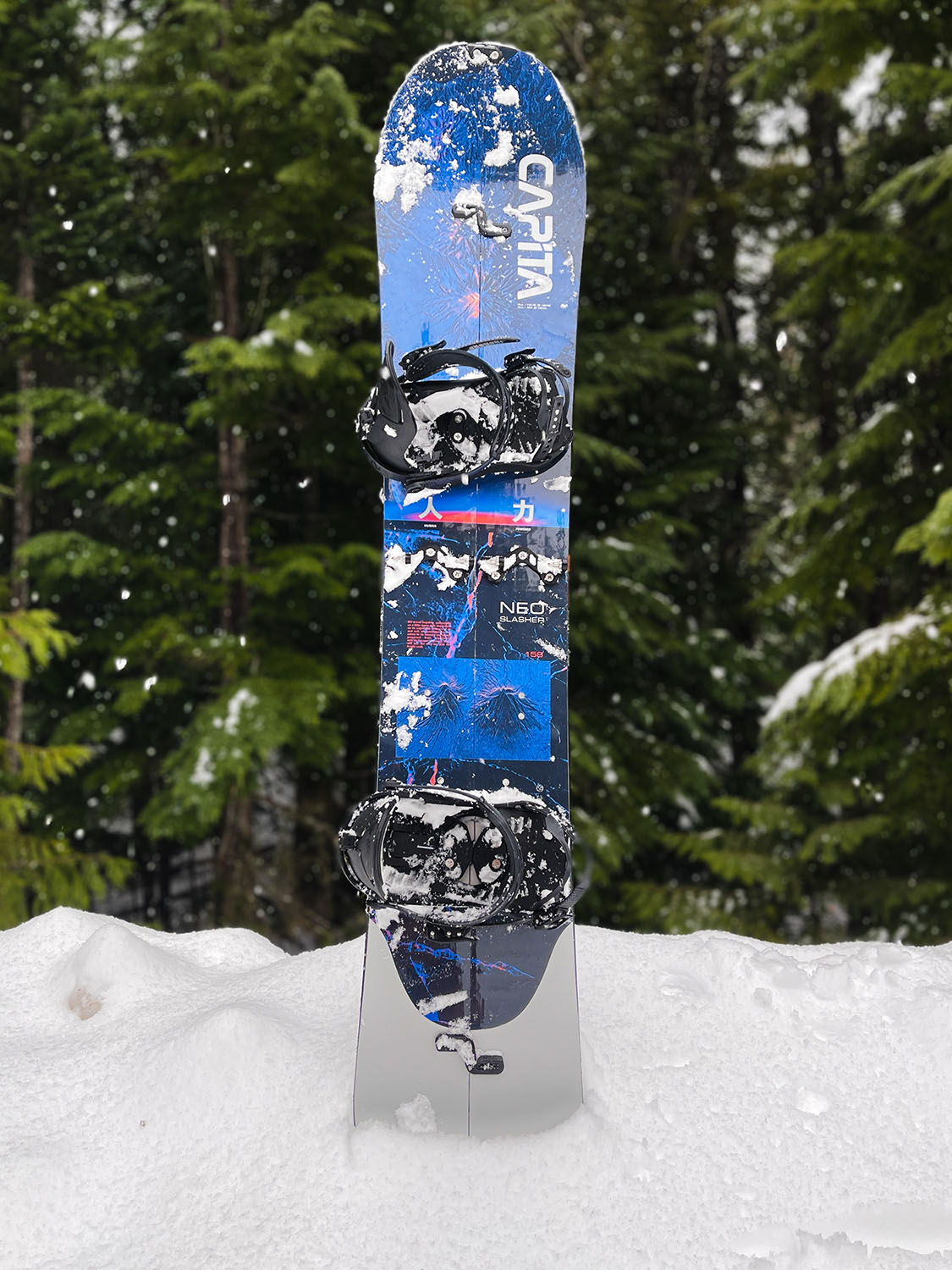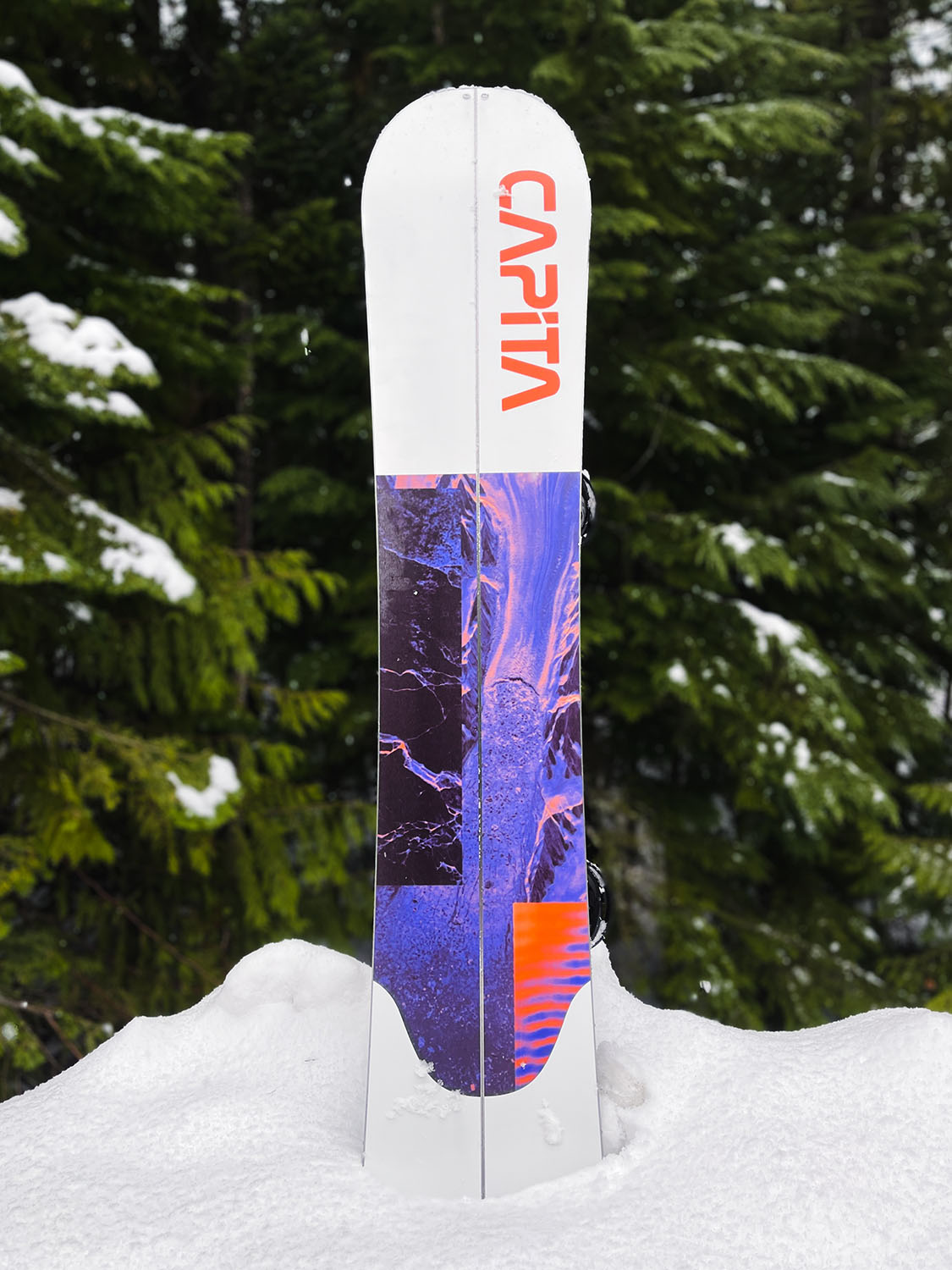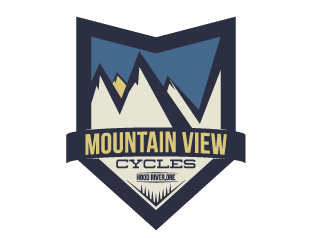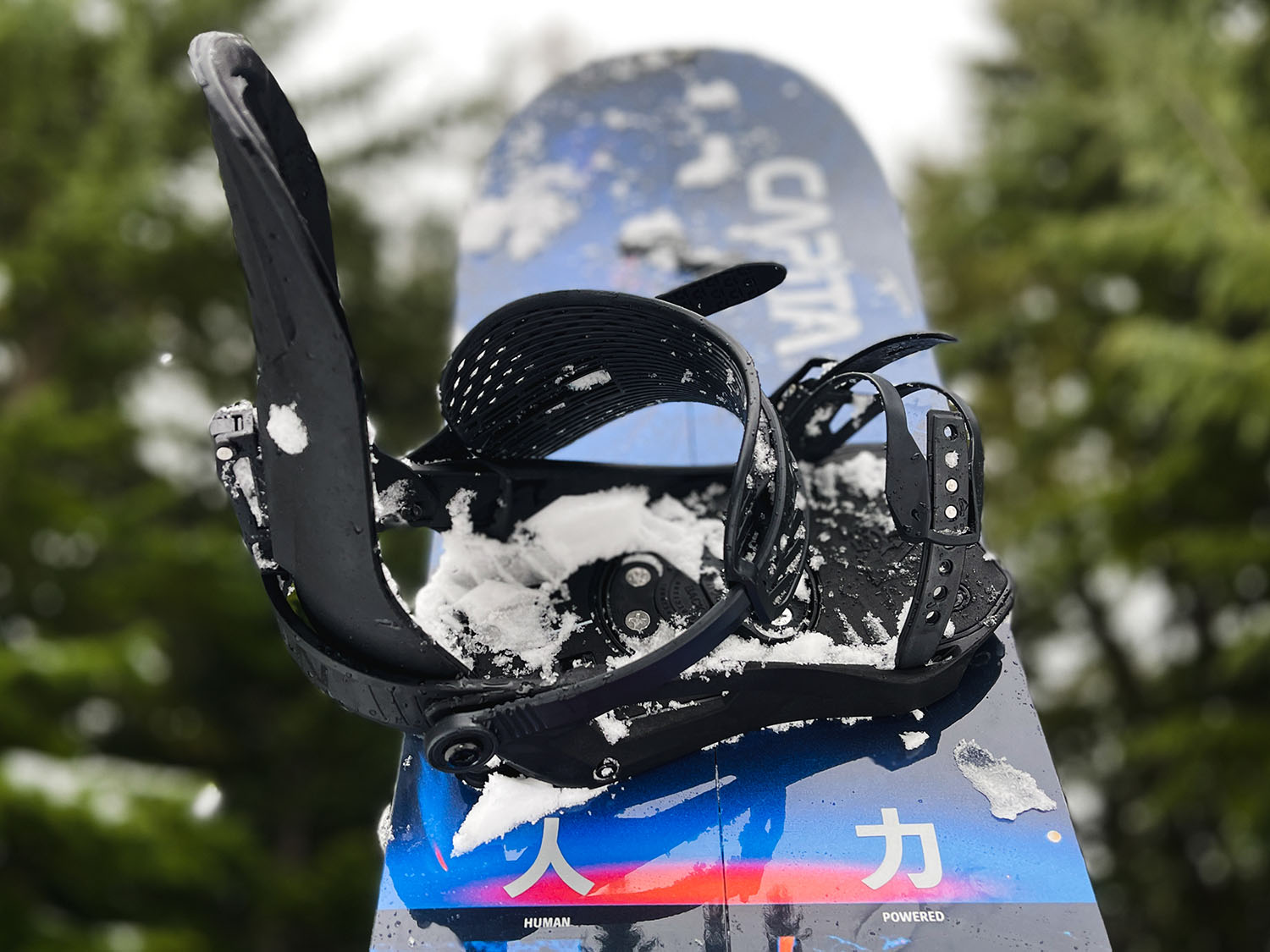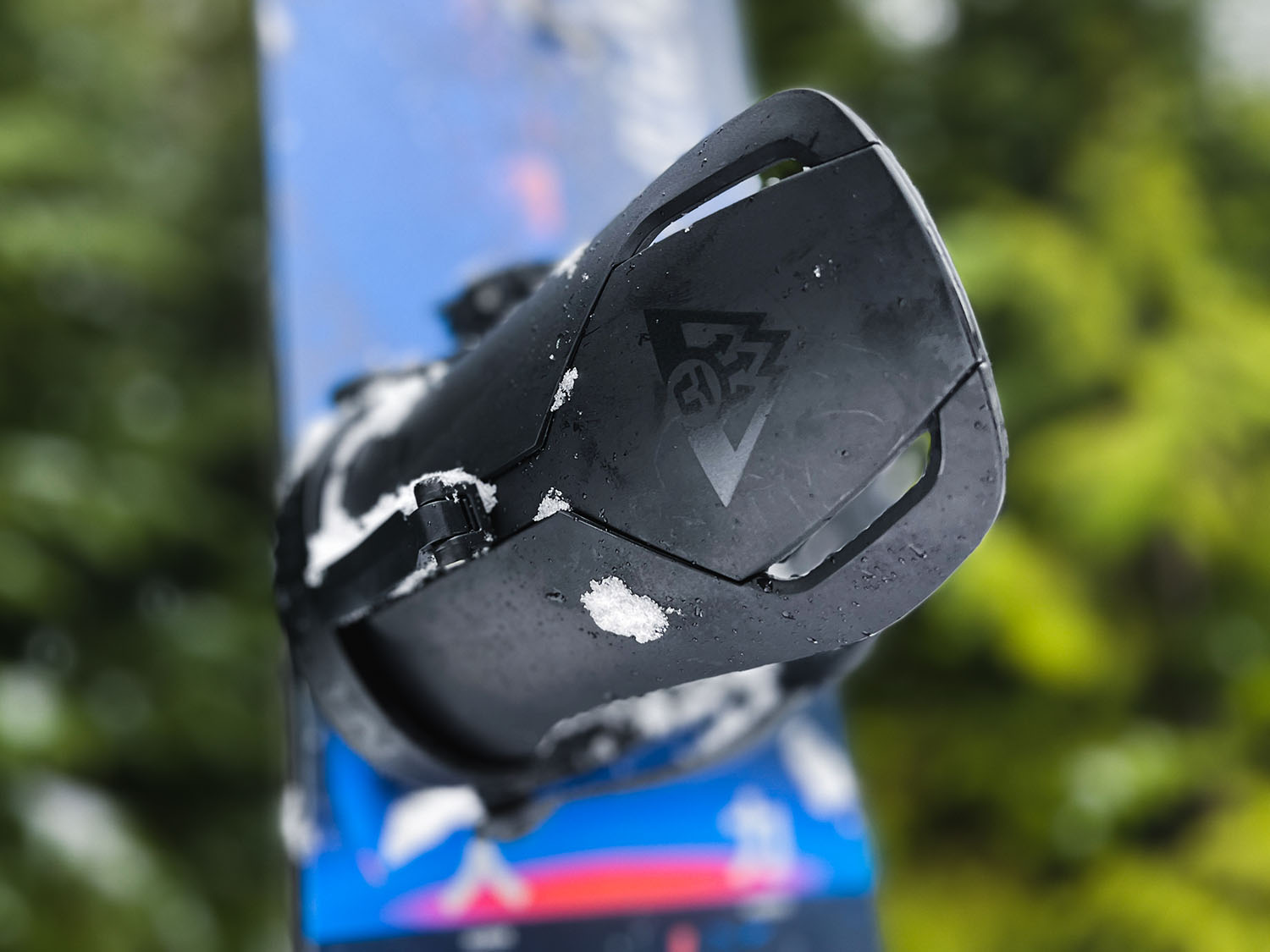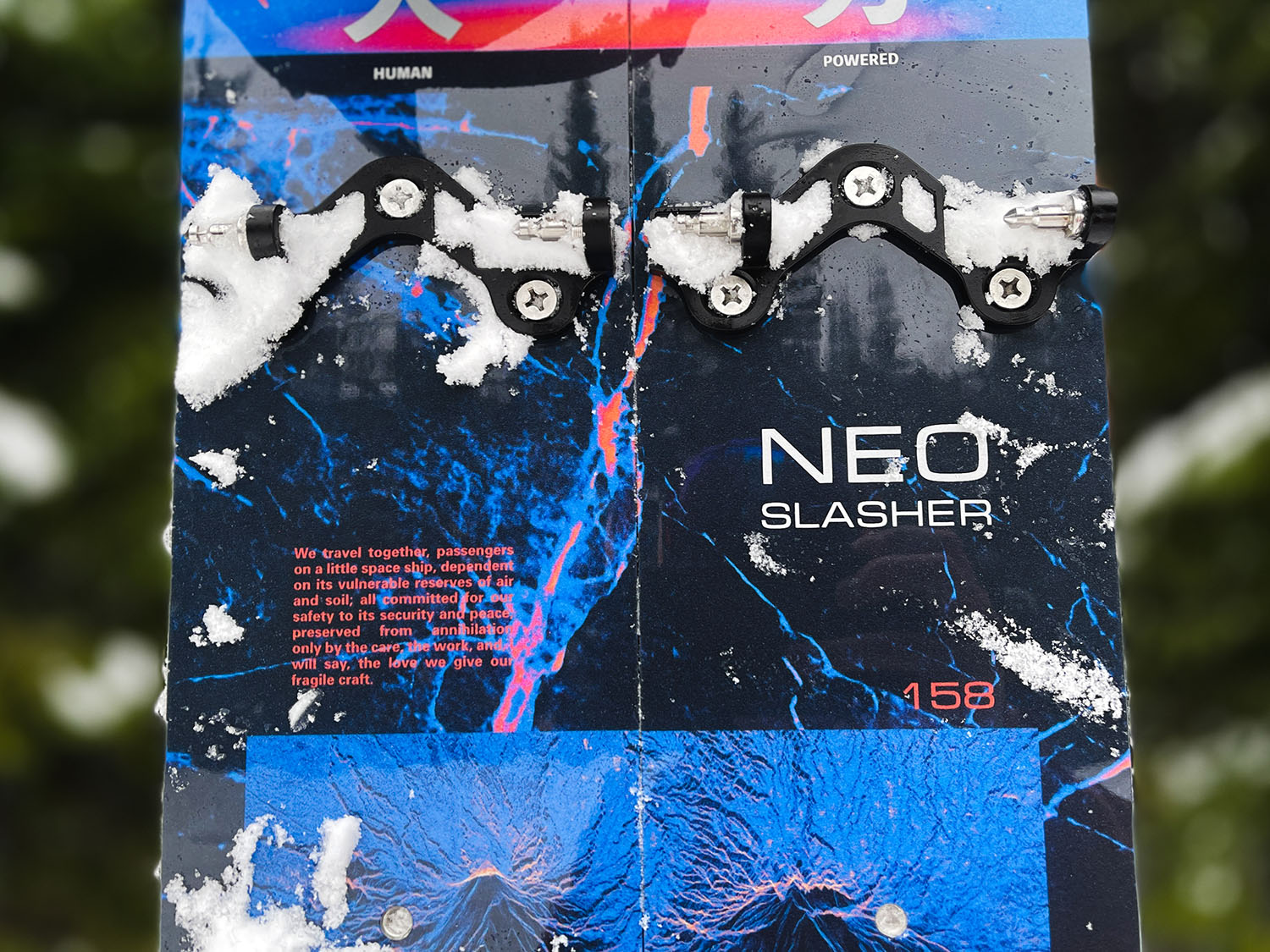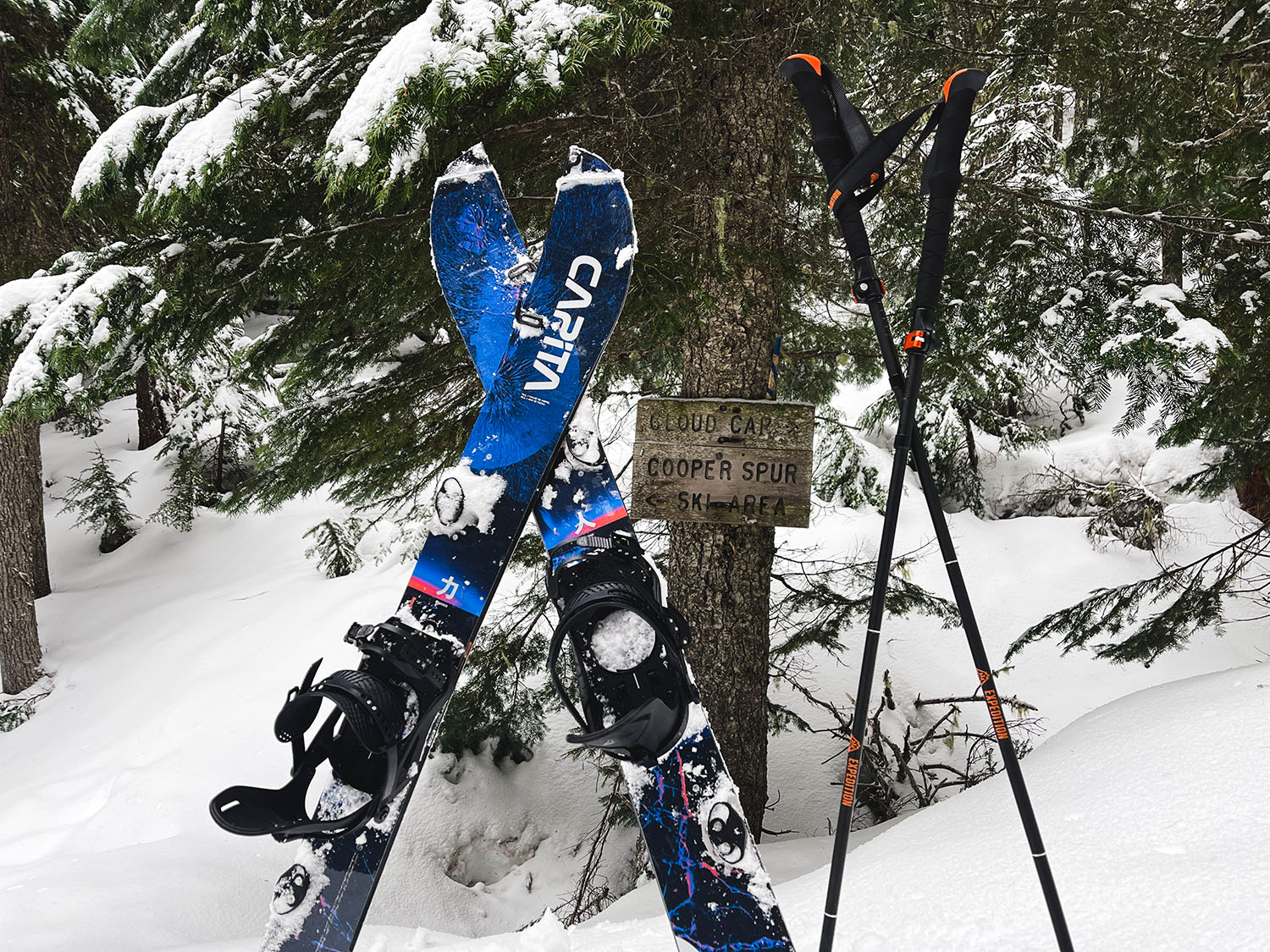
Nate's Neo-Slasher/Union Charger
For the maiden voyage on my new Capita Neo Slasher splitboard with Union Charger bindings, I skied up a short lap on the lower Northeast side of Mt Hood during a significant shift in the weather. It was drizzling rain off and on - transitioning to a brief warm spell on the mountain. This made the snow very sticky and heavy, which is a challenging test for any splitboard setup.
Going uphill -
Starting out by going up from the parking lot on a narrow trail, the board was configured into split-ski touring mode. In this mode, the Union Charger bindings felt comfortable and stiff, with no noticeable lateral flex or play in the system. The relatively tooless overall design means that there are fewer bolts to pay attention to, and less risk of mechanical failures in the backcountry. The front pin system looks like two headphone jacks side-by-side, with small flat sides on them. Slide the binding in while it is fully tipped forward, and lock it by simply pushing it back down to be level with the board. These never “walked out” or separated from the ski in my initial test, and felt very secure the whole ski up. The binding high backs have a small lever to flip in order to reduce the forward lean, as is pretty standard to make the walk mode more comfortable.
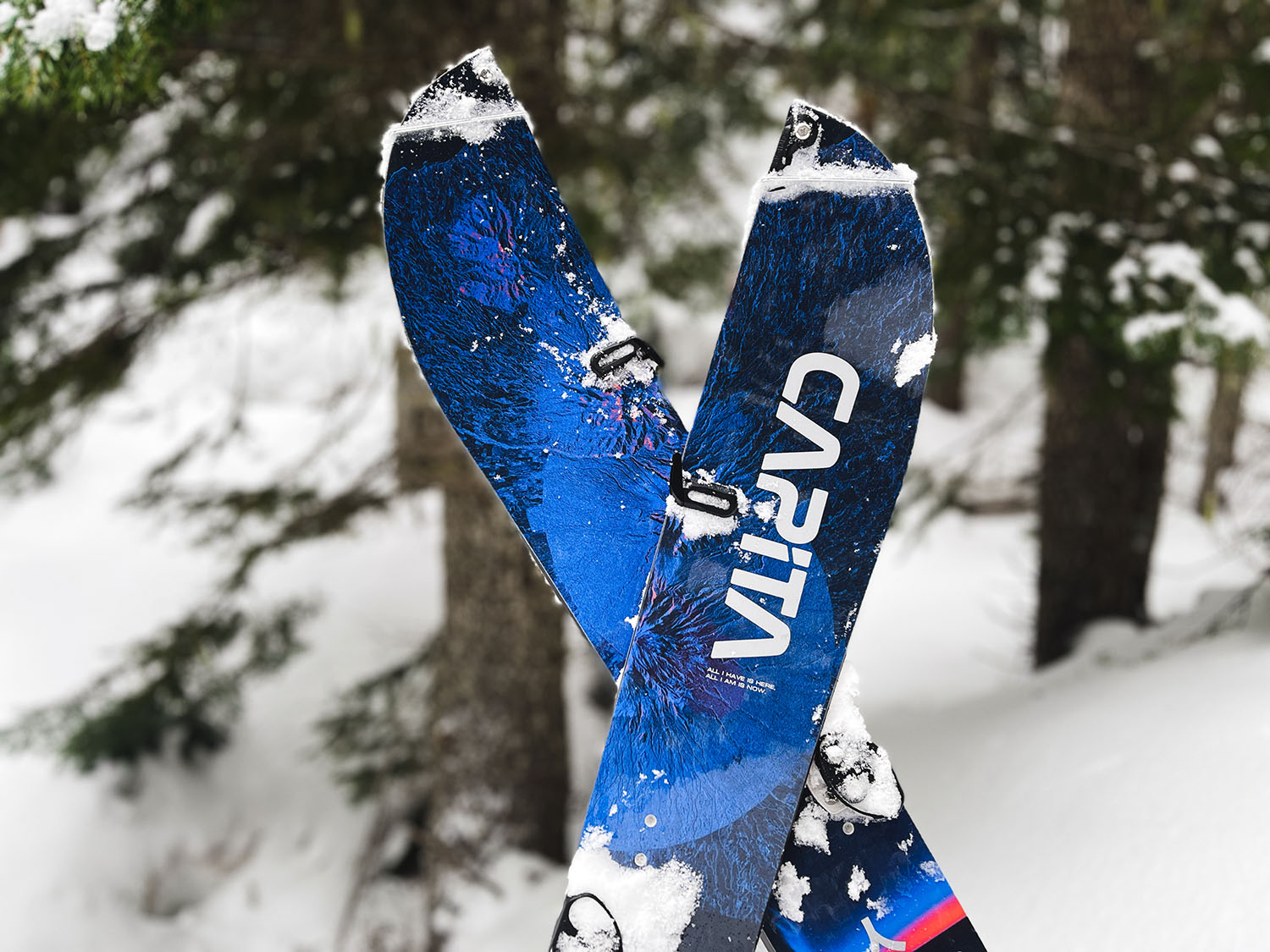
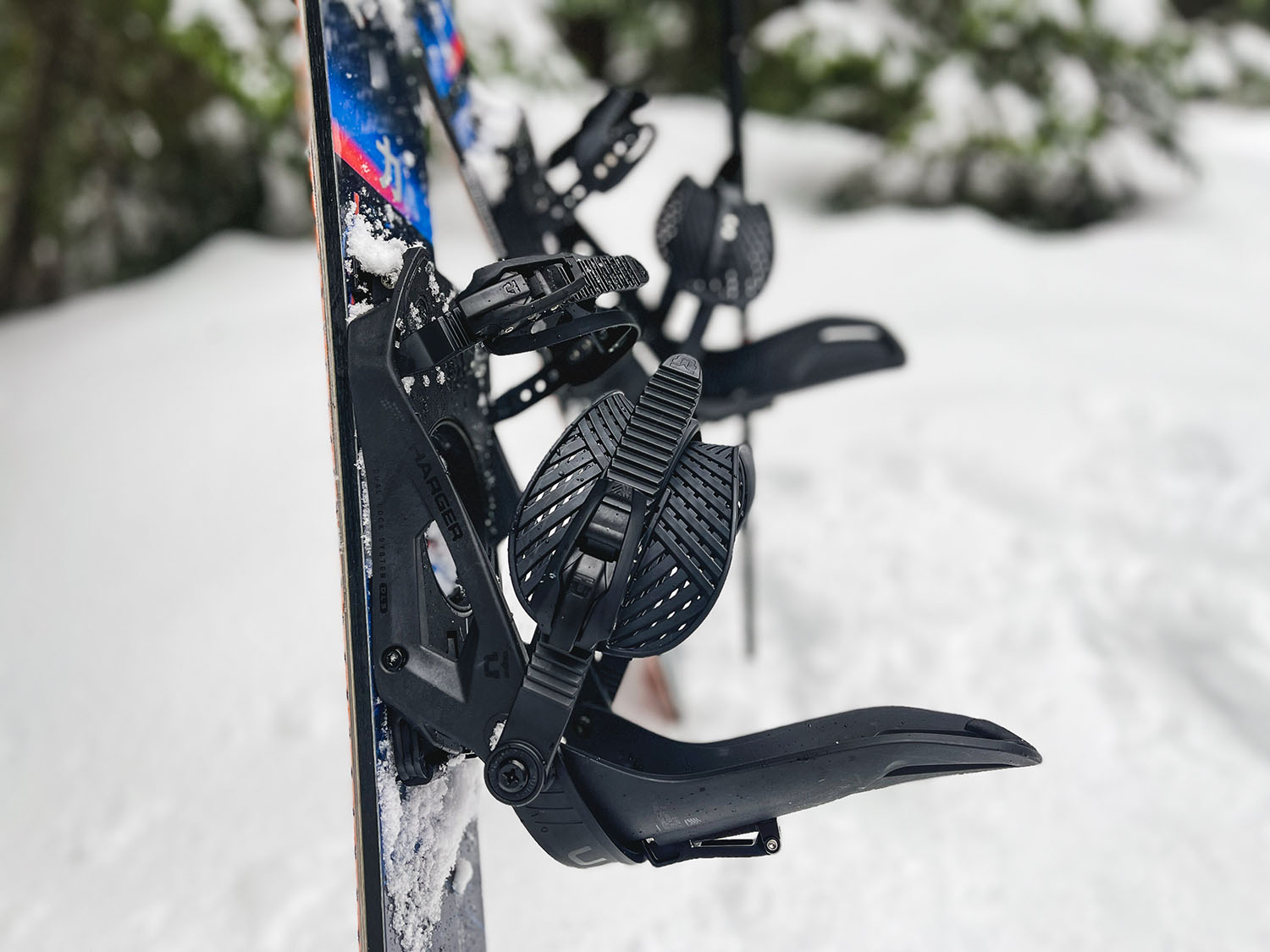
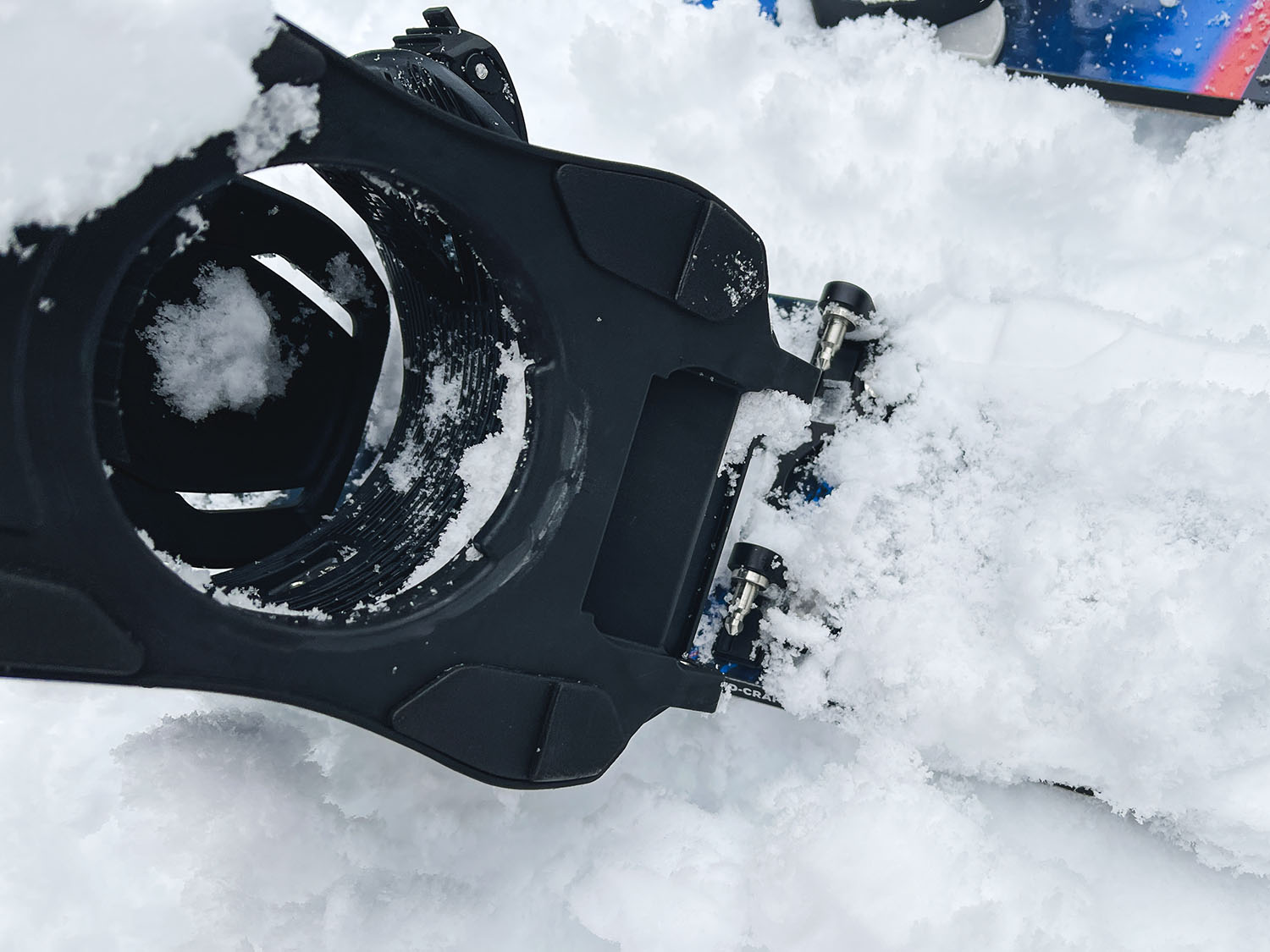
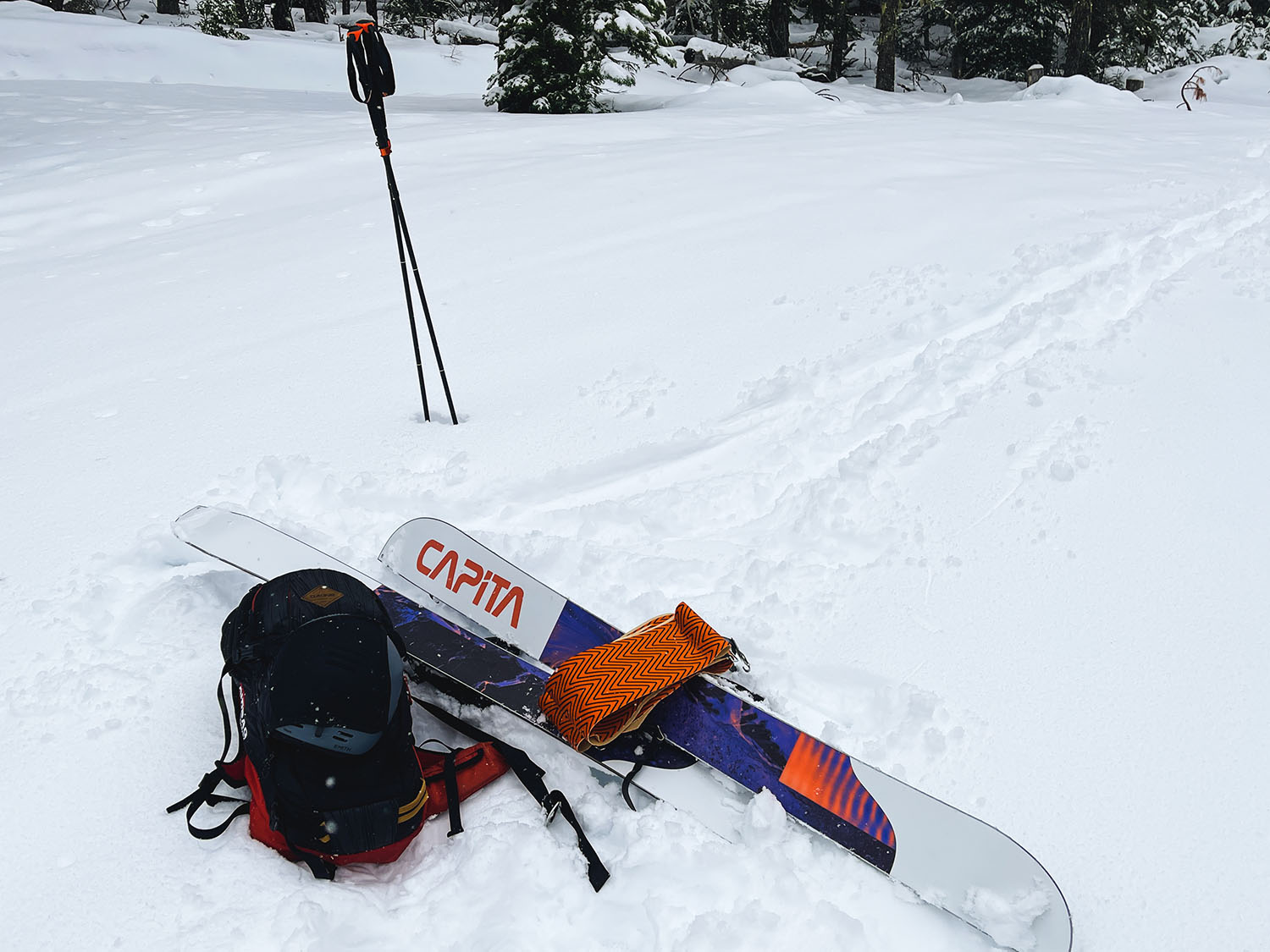
Transitioning to ride downhill -
This is where that wet snow really puts a splitboard binding to the test. Coming from a different brand of binding on my previous setup, a big pain point for those bindings was how they would clog up with snow and ice very quickly, and I always had to spend time chipping them out to get them to even latch in at all. The sticky wet snow did not pose that same problem with the Union Charger bindings, and I spent very little time even needing to clean and prep the area around the pucks that they clip into. Just a simple brush with the gloves on either side to generally expose the split puck did the job.
Union’s splitboard bindings have some clever design features that solve some problems I’ve experienced with other bindings. The way you push down onto a split puck, for instance, naturally punches out most of the snow stuck inside the binding.
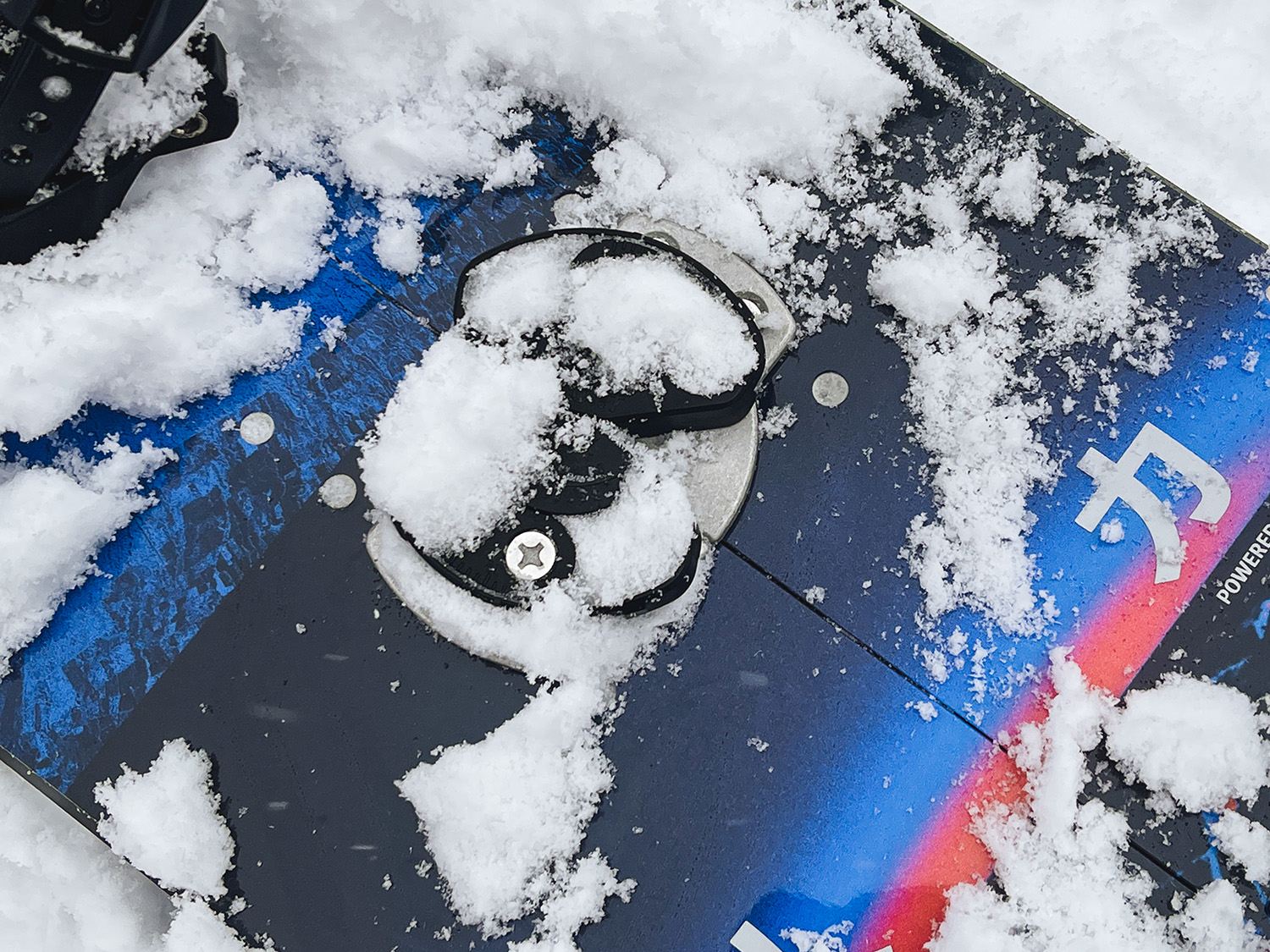
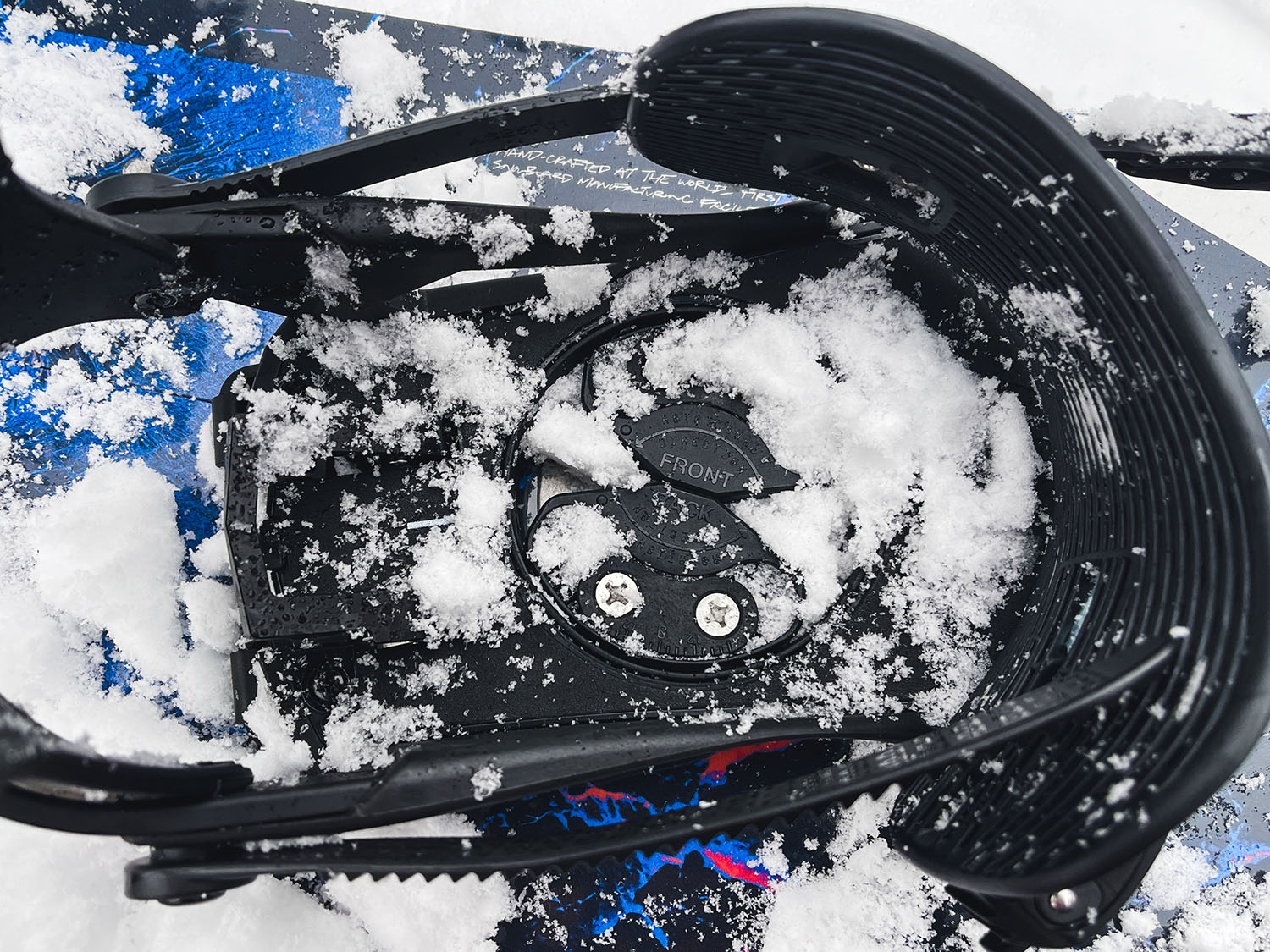
There’s some wiggle room here, so you don’t need to clean it perfectly in order to initially press it down. Then, the rotation fits the front and rear inner tabs of the bindings into channels on the pucks, tightening the whole system down. In that process, the snow and ice that was left seemed to get pushed out of the grooves and scraped off the base of the bindings all on its own, requiring less fussing with prepping the baseplate area to get the bindings to go on perfectly. Having spent quite a bit of time doing that with my old bindings, the simplicity and generally frustration-free transitions with the Union Charger bindings are a welcome change.
Bindings riding downhill -
The final step of the attaching bindings is to latch down the lever on the heel, which pinches the split puck baseplate together. This squeezes the whole splitboard together nicely, making it feel very unified. There is additional hardware on the board to hold the nose and tail together, but clamping those binding baseplates together plays a bigger role in how the board feels going downhill. Once strapped in, I immediately thought “this feels like a resort setup, not a backcountry splitboard”. The bindings have enough flexibility under foot to feel like something you would take with you on the chairlift. Due to the “resort board” flex and ride characteristics, you forget very quickly that you are riding on a splitboard setup.
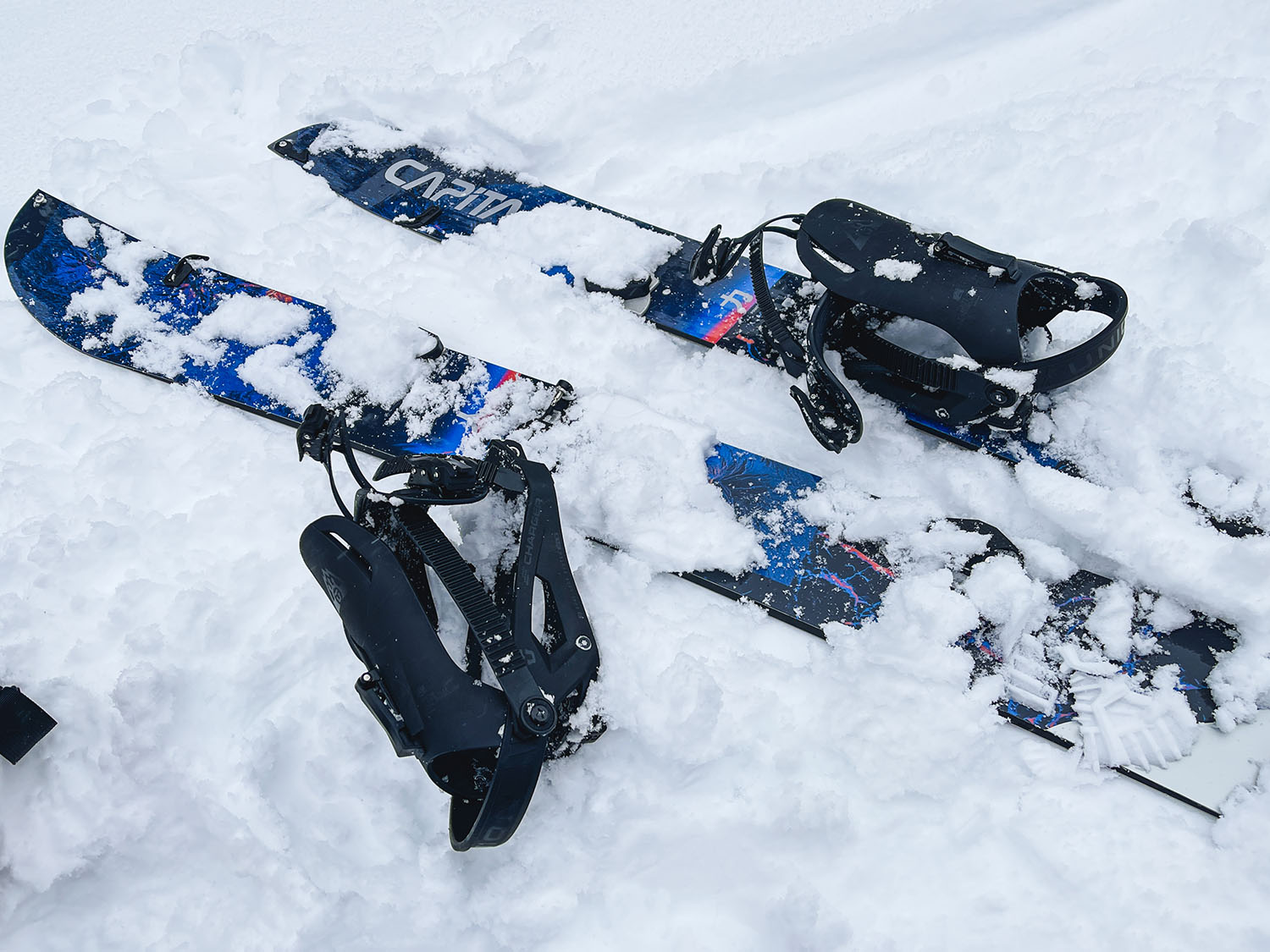
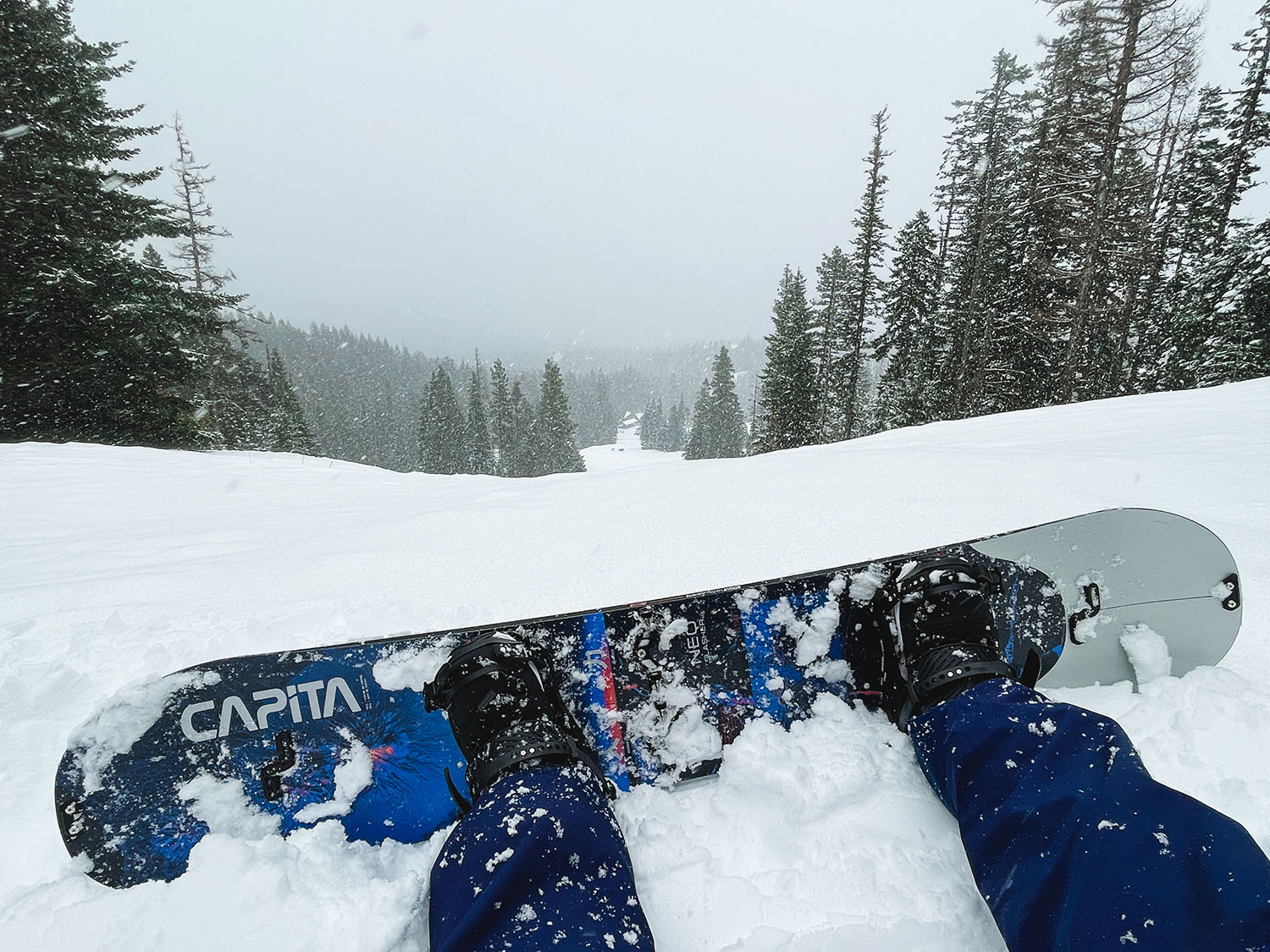
Board riding downhill -
Capita Neo-Slasher board ride feel - This board is a directional, all-mountain board, and is about a 7 on the stiffness scale. Depending on the type of backcountry travel you do, I believe a splitboard should usually fall in that well rounded board category - one that will still hold a solid edge in the toughest scenarios you might find yourself in. For my backcountry setup, I tend to shy away from the wild and experimental board shapes that are built for really specific uses, and generally stick with a safer camber under foot, rocker tip and tail design. I want my board to generally perform well in any situation, and know that perfect powder days aren’t always attainable, even in the backcountry.
The previous board I used in the backcountry was extremely stiff - about an 8 - and although being very surefooted in the worst conditions, it wasn’t very playful in the deeper powder lines I was often seeking out on my tours. That board was built for climbing mountains and getting through absolutely nasty terrain. The Capita Neo-Slasher is still stiff enough to feel very solid underfoot, but I thought it was significantly more playful in the deep snow. Since 90% of the time this is what I’m seeking out on my tours, I wanted a board that can play a little more in this environment. Riding down, I could lean back on a manual and hold it, without getting snapped back so quickly. It allowed me to surf and pop around more too, while still possessing that power edge that you want when riding through chunk and over icey parts on the mountain.
The board feels the best to me with a fairly wide stance. I was very impressed with how fun and snappy it was, without it leaning on either the “too sloppy” or “too aggressive” sides of things. It’s perfect for our unique and playful Pacific Northwest terrain.
Other pieces to note -
The fresh Union skins on my board feel fairly balanced in terms of grip vs glide on the snow, and of course the brand new glue stuck really well to the board without being too difficult to rip off the ski. The Union expedition poles were an upgrade for me - my old set didn’t compress enough to fit inside my backpack. These poles do break down enough to fit inside the pack, but were still very sturdy and I felt confident that I could put a bit of weight on them if needed to.
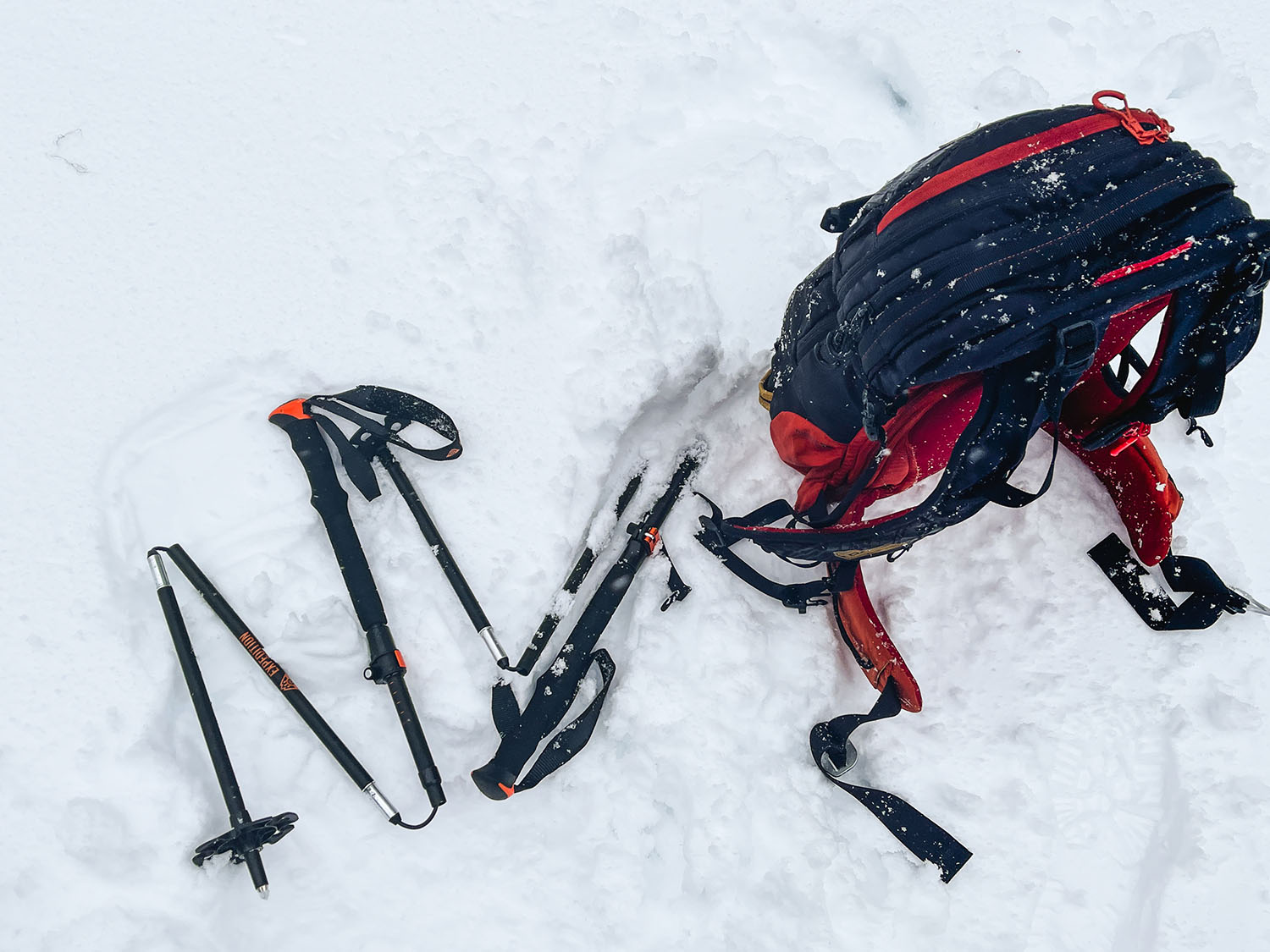
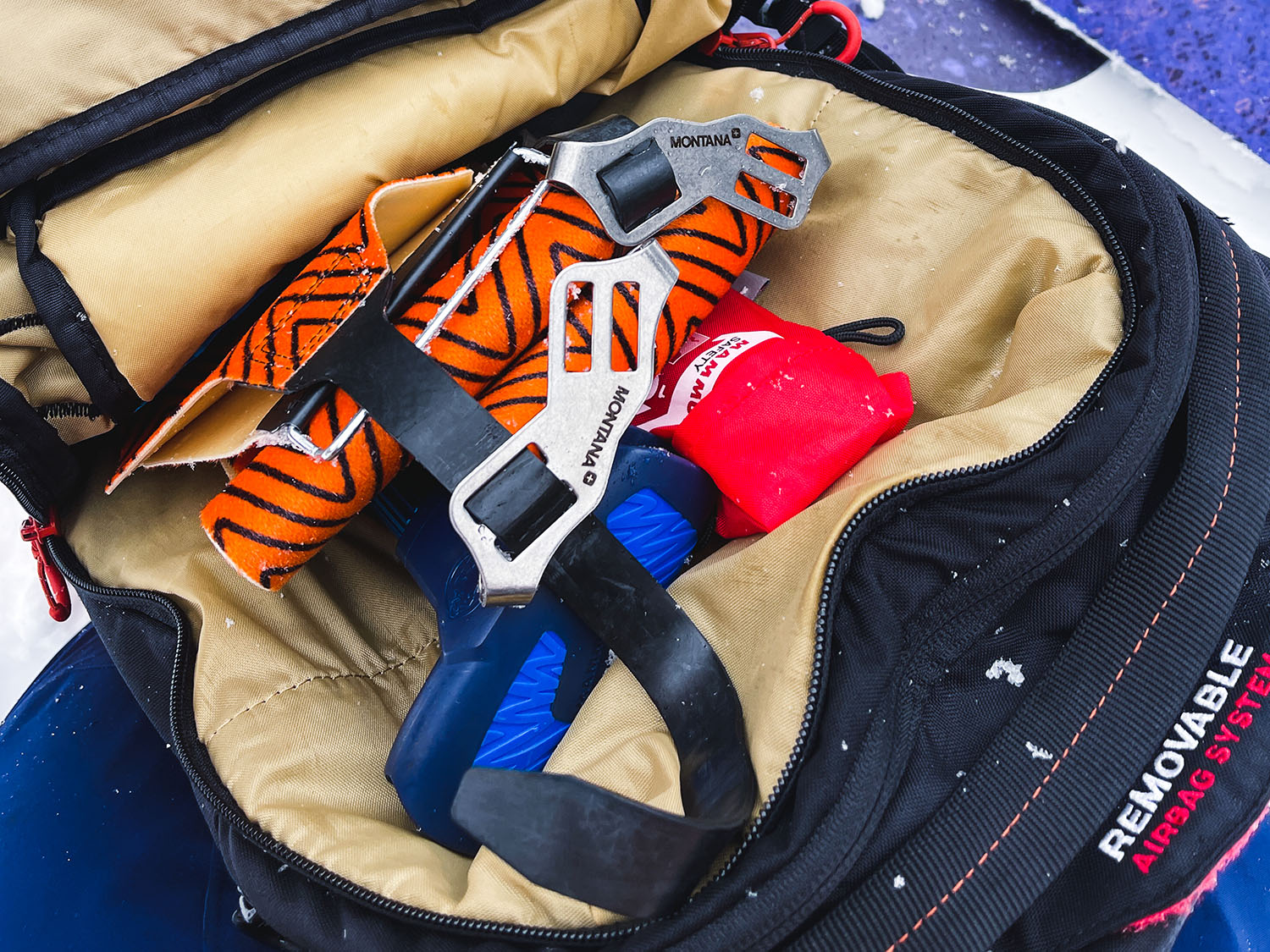
Summary -
There are more gear options than ever in the splitboard market. With some of the newcomers entering into the field, what were the best bindings or board systems 10 years ago are not necessarily the case for every rider anymore. In this space, Union's approach to touring bindings is fresh and clever, and seems they paid attention to some problems that might plague some of the other binding options on the market. I would say the quality is still very good while being very simple (and simple is good in the backcountry). So, to sum up the Union Charger bindings, I would say they are cleverly designed, simple and built especially for the ride down.
Capita splitboard setup -
Capita is also one of the more premium snowboard companies on the market with a cool manufacturing story to boot. The board’s playful-yet-solid feel and riding style marries up perfectly to the Union binding setup, keeping the focus on the fun, powder-seeking tours that I think the majority of us are looking for when we go into the backcountry. The Neo-Slasher summed up to me is lively with a solid edge hold, but still playful in deep powder.
